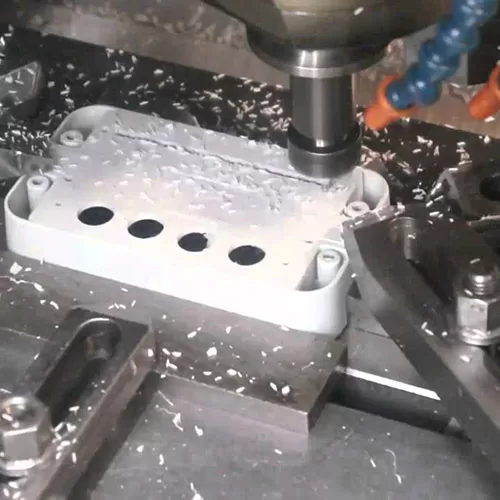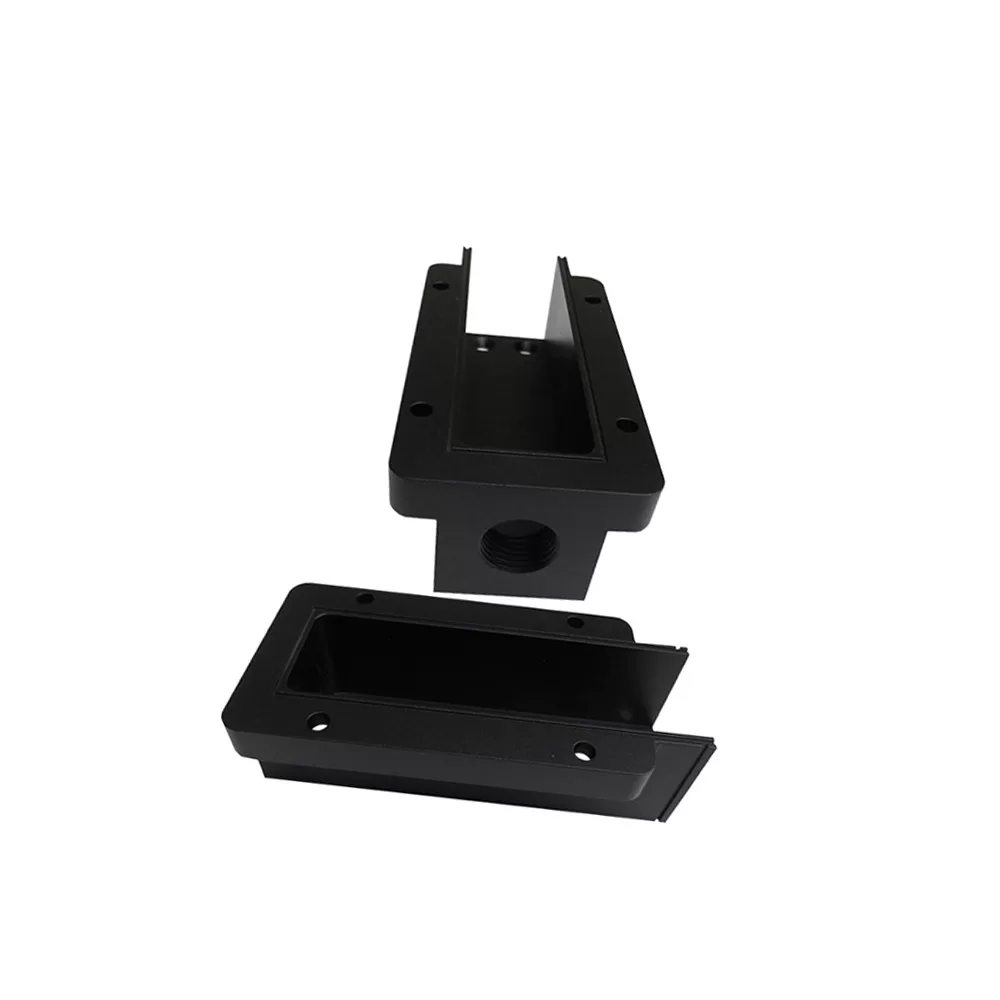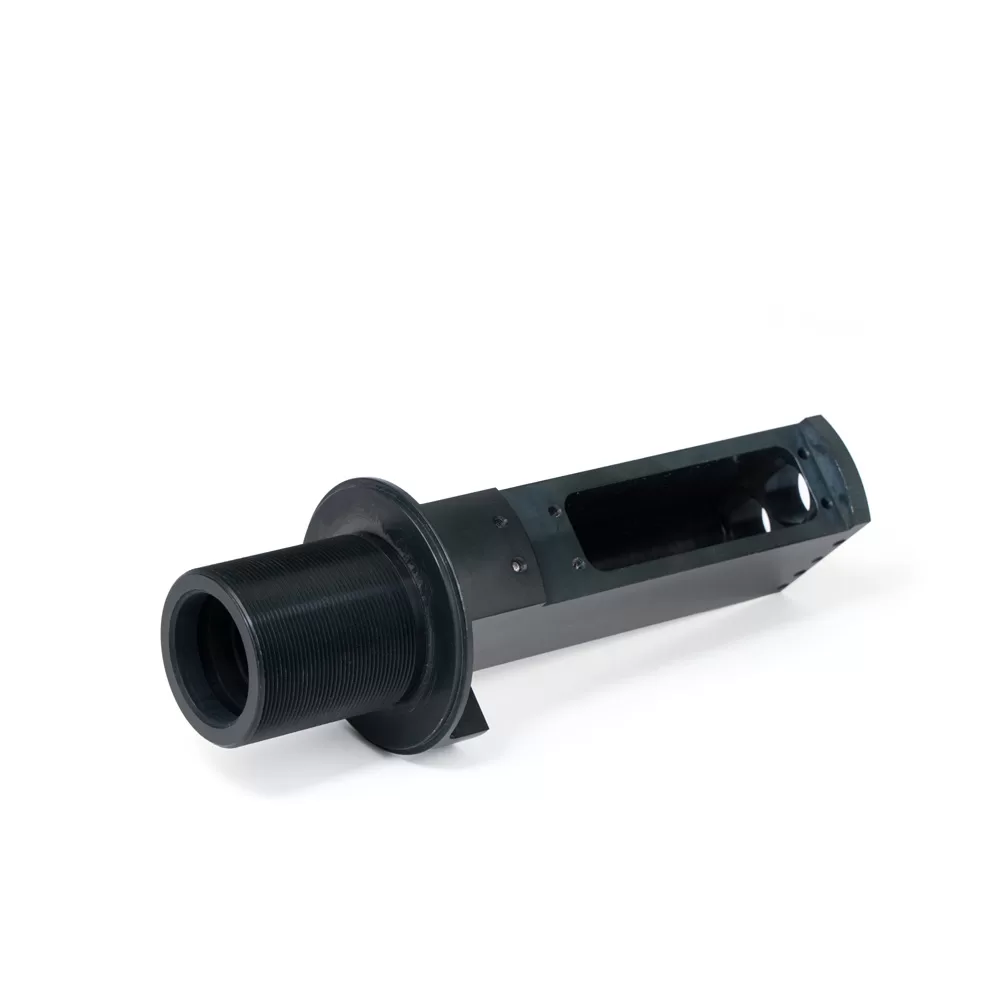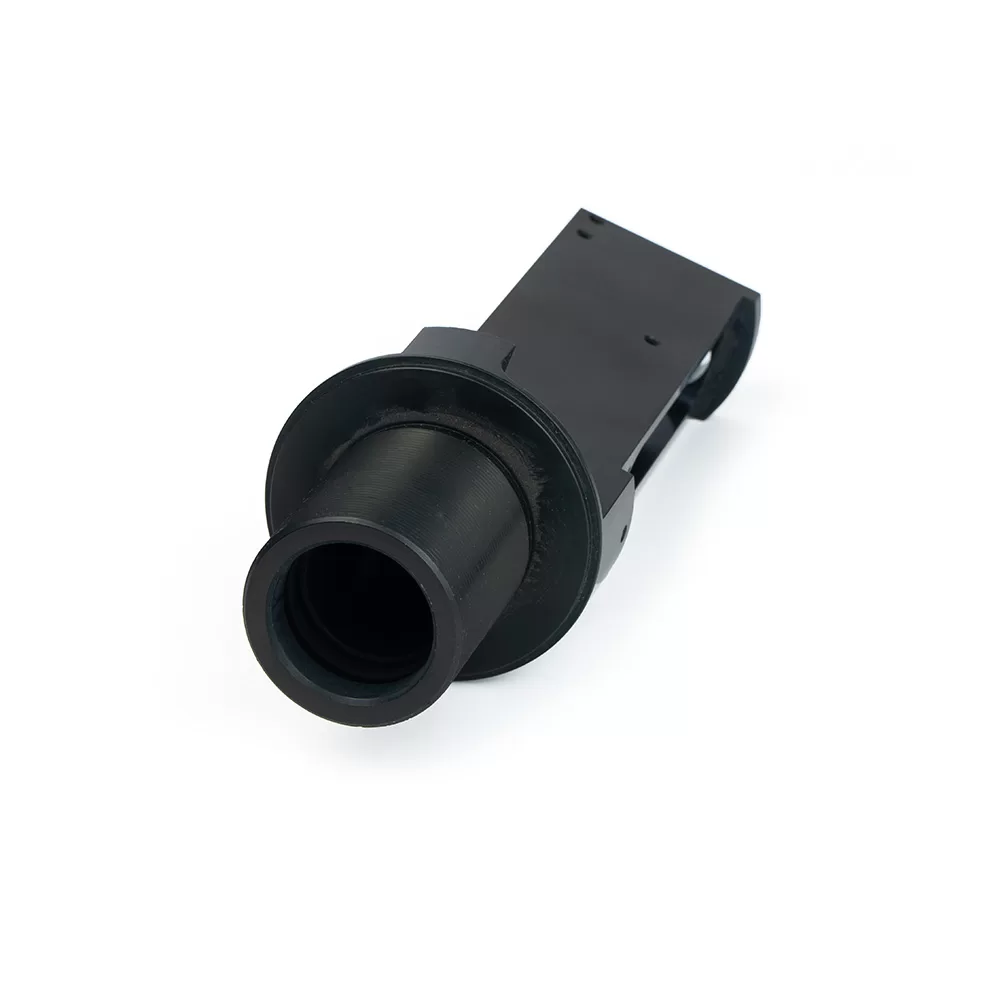Xi’an Hi-Precision Machinery Co., Ltd provides you with highly flexible ABS CNC machining services.
As a professional non-standard CNC parts manufacturer, we have extensive experience in plastic CNC machining. The plastics we support for CNC manufacturing include but are not limited to ABS plastics.
Contact us for manufacturability feedback!

About ABS Plastic and CNC Processing
What is ABS plastic?
ABS is the abbreviation of Acrylonitrile Butadiene Styrene.
ABS is known for its ease of processing, coloring, and adaptability to additives, making it a multifunctional thermoplastic. Although it can be used for household toys, it can also be used for critical task applications such as electrical insulators and automotive interior and exterior components.
- Impact resistance
- Chemical resistance
- Ideal electrical insulator with added moisture resistance
- Good strength and stiffness
- Platable grades
- Excellent aesthetic qualities
- Colorable
- Various gloss levels (Matte to High Gloss)
ABS is one of the most common thermoplastic polymers. Compared to other high-performance thermoplastic materials such as PEEK or VESPEL, it is relatively inexpensive. Compared with other common polymers, it has good mechanical properties, including impact resistance, toughness, and rigidity. It is also easy to modify with additives to improve any performance. For aesthetics and color, it is usually a polymer as its natural color ranges from semi transparent ivory to white. According to project requirements, pigments and additives are usually added to the resin to improve quality.
Application of ABS plastic
ABS mainly exists in various consumer goods. This includes LEGO building blocks ®、 Recording machines and other instruments, golf club heads, household vacuum cleaners, etc. ABS is a household necessity for many consumer goods. It has also discovered various end-use applications in the industrial field. Applications include car decorations and components, inhalers, tendon prostheses, drug delivery system trachea, electrical and electronic component casings, protective helmets, etc.
Common Applications
- Structural components
- Automotive interior and exterior parts
- Medical devices
- Electrical components and assemblies
- Toys
- Housings/covers
- Kitchen appliances
Challenges faced when CNC machining ABS plastic parts
ABS plastic is clearly a valuable material, but using it to manufacture high-quality, precision machined parts requires the correct equipment and professional knowledge. Inexperienced CNC machinists can easily damage ABS plastic parts during the machining process without proper understanding. Like other processed plastics, two very common processing defects in ABS plastics are deformation and poor surface smoothness.
ABS plastic with processing marks or vibration lines will not meet the surface quality requirements. In addition, any scratches and lines can make transparent components appear blurry or lead to unqualified ABS accessories.
There are several factors that can have a negative impact on the surface quality of ABS plastic parts. The use of incorrect CNC cutting tools, incorrect CNC cutting parameters, and excessive heat accumulation are several common examples of surface damage to ABS parts.
Another common challenge of ABS plastics is to prevent deformation. Compared to commonly used mechanically processed metals, ABS plastic undergoes significant thermal expansion when heated. This may lead to inexperienced mechanics removing too much material, which is evident when the parts cool and contract.
If that’s not enough, ABS plastic also has relatively low thermal deformation temperature and thermal conductivity. Therefore, heat will quickly accumulate at the processing location, causing the plastic to soften and deform. Overall, this means that designers and mechanics need to be cautious when using ABS plastic, especially for thin or complex parts that are prone to deformation.
5 Tips for CNC machining ABS Plastics
In order to avoid defects when processing ABS plastic, our company often uses the following tips to ensure high-quality results:
- Uses machine grade ABS plastic. ABS plastic comes in many different grades, and each grade has a unique formula optimized for extrusion, casting or machining. Always use machine-grade ABS plastic when CNC milling, turning or drilling to ensure good chip formation and superior surface finish.
- Use suitable cutting tools. Tools optimized for machining high-strength steel and titanium alloys are not the best choice for ABS plastic. CNC machinists familiar with plastic machining will know how to select cutting tools designed specifically for plastics. It is also important to ensure that these cutting tools are kept sharp to prevent damage to the plastic surface.
- Adjust cutting parameters. A single cut that is too deep or too shallow can deform the part or cause processing chatter. Using the wrong cutting speed or feed rate can cause excessive heat build-up, which can deform the ABS part.
- Use appropriate coolant. If coolant is not used, ABS plastic may overheat and deform during processing. But not all coolants can work. ABS plastic has good overall chemical resistance, but it may still be contaminated by coolants designed specifically for metals or ceramics.
- Anneal ABS plastic. Unannealed plastic parts may have large internal stresses that are not apparent in the stock material. If the ABS material is heated during processing or use, these stresses can deform the final part, deforming its shape beyond tolerance limits. By putting ABS plastic into a heat treatment furnace before processing, the material can be slowly heated, maintained at the annealing temperature, and then cooled slowly to eliminate internal stress.
How do we ensure machining accuracy and quality in ABS CNC machining?
- Optimize tool path strategy: Efficient tool paths can ensure efficient material removal while reducing waste and improving machining efficiency.
- Understand ABS characteristics: A deep understanding of the characteristics of ABS plastic is essential to obtaining accurate machining results. This includes knowing the melting point, shrinkage, and mechanical properties of the material.
- Master surface finish: By accurately controlling the cutting speed and feed rate, the desired surface quality can be obtained, which is very important for the appearance and function of ABS parts.
- Strict tolerance management: During CNC programming and operation, strict adherence to tolerance requirements is made to ensure that each part meets the design specifications.
- Appropriate cutting parameters: Selecting the appropriate cutting speed, feed rate, and cutting depth is essential to prevent material overheating and ensure machining quality.
- Use the right tool: Selecting the right tool material and geometry can improve machining efficiency and reduce tool wear.
- Use of coolant: Using coolant during machining can help control temperature, prevent thermal damage to the material, and improve cutting efficiency.
- Workpiece clamping: Ensuring that the workpiece is stably clamped during machining to prevent vibration and displacement is critical to maintaining machining accuracy.
- Quality control and inspection: Implement quality control and inspection at each stage of the machining process to ensure that the parts meet quality standards.
- Post-processing: After machining is completed, post-processing steps such as deburring, grinding, or polishing may be required to further improve the surface quality and accuracy of the parts.
By following these steps, our team can maximize the accuracy and quality of ABS CNC machining, thereby producing high-quality parts that meet your design requirements.




